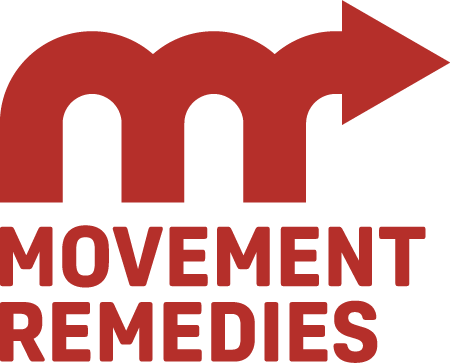Movement is What You Were Meant For
Almost as tedious as the process of writing a book has been agonizing over a title for it. I had no idea it would be so challenging to find that one phrase, that one perfect cluster of words, that would encompass everything I am trying to say in this book. Although, when I say it like that, I realize it is kind of a fool’s errand to aim for perfection with such narrow guardrails. Struggling as I was with my analysis paralysis, I reached out for the wisdom of the Movement Remedies community, and I was both amazed and humbled at how everyone offered to share their thoughts on my labor of love.
I got lots of awesome ideas, so thank you to everyone who participated. For as many people as I contacted for advice, I got almost as many new suggestions. It reminded me that the experience of being in pain is so personal. Words and imagery resonate differently depending on the reader and their unique perspective. For example, while the idea of rewriting your pain narrative might make sense conceptually, it might also feel dismissive, as if getting rid of pain should be as easy as taking some notes. I certainly didn’t want to insinuate that the severity of my readers’ pain wasn’t being taken seriously.
The name for the book should offer hope, because it is a positive story about my own struggle with chronic pain and how I have learned to cope–maybe even thrive–after decades of doubt and despair. It contains the many pearls of wisdom I have gained from working with my clients in pain and the varied paths they have taken to get active, even when it hurts. After all the amazing things I have seen people achieve, I can say with confidence that when it comes to your classic back and joint pains, anyone’s level of mobility can improve in some way. So that hope for being autonomous in your body and empowered to take steps toward movement has to come through.
Even though I want the overarching message to be hopeful, I didn’t want to say anything in the title about healing, because I am not promising anyone’s pain will magically disappear. It would be disingenuous for anyone to say such a thing. That’s like telling a teenager–as much as you may want to–that you can promise they will never get their heart broken. In a way, you hope that they will, just not too badly–because at least it will mean they took a risk and lived to the fullest. And it’s the same with pain. If you have some aches and injuries that accumulate over the years it both means that you challenged yourself and that you lived long enough to experience the effects of aging. And isn’t that really a privilege?
In the end, the winning titles from everyone’s votes were “You’re Meant to Move” and “The Movement Remedy.” As enticing as it was to use my studio’s branding for the book, it just didn’t have the oomph and intrigue I felt it needed. At the period in my life when I really started seeking relief from chronic back pain, I don’t think I would have been drawn to a book called The Movement Remedy. It might have seemed pretentious to me. But I do think that “You’re Meant to Move” would have spoken to me because all I wanted at that time was to experience the joy of moving my body again without fearing pain. As I lay there every night after work wondering how long the discomfort would last, I couldn’t stop thinking about all the hours I had squandered sitting in a chair when I could have been jumping, leaping, twirling, wiggling–doing literally anything exuberant in my body before that ability was suddenly yanked away.
I love “You’re Meant to Move” for the same reasons I initially resisted it: its meaning can be interpreted differently depending on the person and their perspective. To be “meant” for something means you are perfectly suited to it, maybe even destined. But when your mother says, “you’re meant to close the lid when you’re done with the toilet,” that’s a bit more of a directive statement as in “you’re supposed to” do something. If I say that we are meant for each other it means that I believe we are soulmates. I think all of these meanings and more are relevant for the many messages in this book.
Your body is purpose-built to be mobile. Your joints, tendons, muscles, blood, and so on – they work together to make us a unique species among Earth’s varied creatures that has evolved with the capacity to solve problems, organize into complex social groups, create artwork, and escape a hierarchy of predators. From an evolutionary perspective, you’re not meant to sit in a chair all day and you’re not meant to be driving instead of walking–you’re meant to move!
Additionally, moving is what you are supposed to do with your body for optimal health–even when you feel defeated, in pain, and stuck, your body will respond better to moving than to rest almost all of the time. And so will your mind. Even if rest is called for, it isn’t for long. Remember that story the Secret Garden? I loved reading that book to my stepson when he was little. Colin Craven believed he was a sickly and hated young boy and his beliefs promoted behaviors that reinforced his weakness. But the hope and encouragement of others gave him something to strive for and the more he moved, the stronger he became. Eventually he was running through the garden and his joy was contagious. It turns out that movement was in fact what his body was meant for.
So get ready, folks, because “You’re Meant to Move” is coming this December!!
